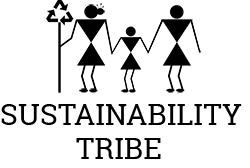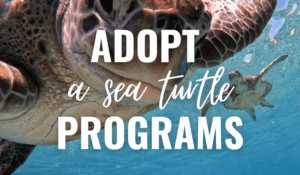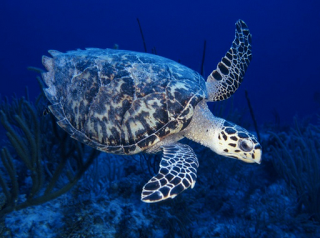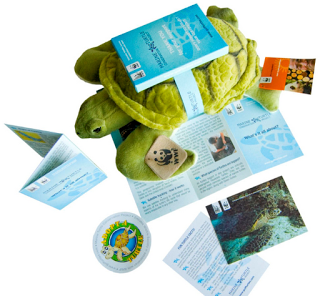Two out of the seven species of marine turtles, the Hawksbill turtle (Eretmochelys imbricata) and the Green turtle (Chelonia mydas), occur in Gulf waters. Worldwide, the IUCN Red List (IUCN2008) lists the hawksbill turtle as critically endangered and the green turtle as endangered. At the local and regional level, the stocks of these species are threatened and the number of foraging habitats and nesting grounds are continually declining.
Turtles can get entangled in fishing nets, and even swim into fish traps from which they can’t escape. They are also impacted by habitat loss, and as more and more beaches get developed, less and less area is available for nesting. Oil spills which wash up on beaches pose a hazard to emerging hatchlings, and boat strikes from the ever-increasing maritime traffic also take their toll. Topping all of this is climate change, and the Gulf’s cold winters leave dozens, if not hundreds, of turtles cold-stunned. When these turtles sit on the bottom to conserve energy (they are cold-blooded and cannot really control their inner body temperature), they get covered in barnacles to the point they can barely swim or feed.
Hawksbill turtle is a small, beautifully adorned turtle with intricate shell designs. This feature has made it widely sought after for centuries, by artisans who wanted to use it to make jewelry. Massive trade in earlier days brought many hawksbill populations to near extinction. I was lucky enough to get a unique experience of Hawksbill turtle release on the shores of Dubai, read here, I call it one the best experience you can get in Dubai.
Focusing its attention on the critically endangered Hawksbill (IUCN Red Listed), the EWS-WWF project will monitor up to 75 post-nesting female turtles from the region using satellite tracking. Till now they have tracked 20 post-nesting hawksbill turtles in UAE, Oman, Qatar, and Iran.
These turtles live all their life in sea except when they lay eggs, they travel to land and nest there. Turtles depend on coastal habitats, including coral reefs for feeding and beaches for nesting, and this project will help in identifying these key areas throughout the region. EWS-WWF engaged with other Gulf countries and have formed valuable partnerships.
Through this project they are trying to achieve following goals,
1. understand the post-nesting migrations and biology of marine turtles using satellite tracking;
2. Identify the foraging grounds of endangered marine turtles and linkages between nesting and feeding population assemblages;
3. Share tracking data and findings to relevant authorities and contribute to the development of a regional marine turtle conservation plan;
4. Integrate these conservation initiatives within international conservation agreements on marine turtles and national programmes.
EWS-WWF started turtle adoption scheme to increase public interest and awareness. As EWS-WWF is a nonprofit organization, their environmental conservation projects are run on donation provided by individuals and organizations.
Once you adopt a turtle, you get a turtle adoption pack along with a certificate and cuddly toy turtle ‘Nadia’. The best part about this project is Turtle tracking, you could see on their website, where all these tagged 20 turtles roamed in Arabian Gulf. The tagging, of course, is painless and harmless to these endangered turtles.
The most amazing featured I loved about this project is The Great Gulf Turtle Race. In 2011 the race was a huge success with the tagged turtles clocking up hundreds of kilometers across the region to be crowned furthest traveled turtle. ‘Speedy’ turtle (tagged in Iran in 2011 at a new nesting site) who romped home as the winner of the Great Gulf Turtle Race 2011, swimming 133kms further than anyone another turtle in the race! The Great Gulf Turtle Race will return once again in 2012 and their turtle tagging team are currently gearing up for this year’s nesting season across the region.
I am sure you will definitely be interested in this project. You can proudly adopt a turtle like me or may gift it to someone or can go to their website and know more about Turtle facts, tracking, and related fun things. Don’t forget to show youngsters in your family while you browse through gulfturtles.com.
And finally most important, while you are on the beach, if you come across any Marine Emergency please contact below authorities so that they can help marine species.
Abu Dhabi:
For sea turtles, dugongs and dolphins specifically, please contact Biodiversity Management Sector of EAD (Tel: 8009990, +97126934654, Fax: +97124997282).
Dubai:
1. Emirates Marine Environment Group (EMEG) (tel: 043630581/fax:043630460; email: info@emeg.ae)
2. Dubai Municipality 800900.
3. Marine Environment and Sanctuaries Unit (Tel: +9714 606 6818, Fax +9714 703 3532).




